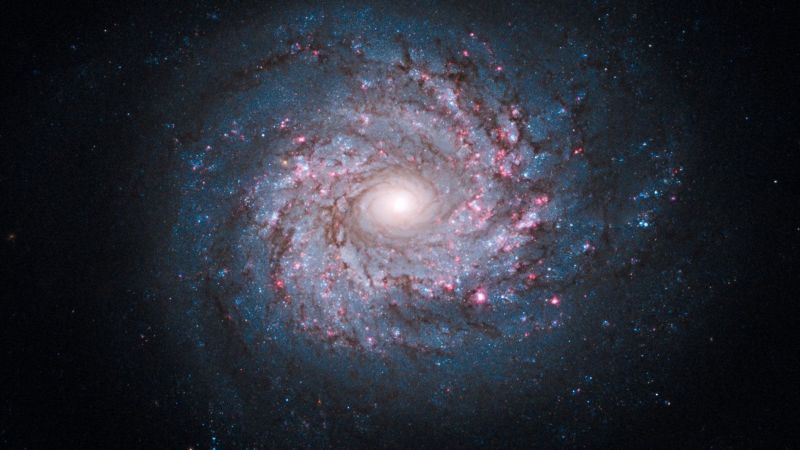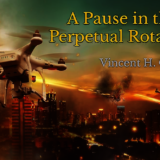
Who was the mysterious stranger who helped injured Londoners during the Blitz– and then vanished? Who was the beautiful blonde girl who blazed like a supernova on the 1970s psychedelic rock scene for a few weeks–and then vanished? How could an astronaut have reached Mars decades before the first manned expedition to the planet finds her body there? Have all humanity’s dreams of a majestic ancient Martian civilization been more than just dreams? Is the future of the human race at stake? In the grand tradition of Arthur C. Clarke, a stunning hard sf novel–the first from internationally known astronomical artist David A. Hardy–that will stretch your imagination in ways you’ve never experienced before. A science-fictional tour de force, now revised and expanded in a stunning Second Edition! – Wildside Press
“Ladies and Gentlemen . . . Guys and Gals . . . Let’s have a big hand for . . . the Gas Giants!”
The curtains rolled back and there was a scatter of clapping as sound began to fill the auditorium. Most of the audience had never heard of the band. It was only the support group, after all. The bar remained full to bursting. Latecomers straggled in and stumbled along the rows of seats, forcing grumbling sitters to stand.
The stage was bathed in ripples of violet, blue, green, yellow light which changed and pulsed with the music. Herbie had proved to have no mean talent with electronics now that Synth no longer monopolised the equipment, and his second guitar seemed no longer needed. He operated a kind of keyboard which produced changes of light instead of sound. The band had broken with the convention of patched jeans and T-shirts, and all wore close-fitting black, including Aurora; though her costume was more in the nature of a cat-suit, against which her bright hair shone.
The audience hardly noticed. At first this was because they were talking among themselves, as they normally did during support acts. But very shortly there was a chorus of “Ssshhhh!” and the late arrivals started getting angry glares. In no time the listeners were being carried away on wave after wave of soaring sound, lifting every one of them out of their humdrum, everyday existence, making them forget troubles, ills, quarrels petty or serious, and at the same time welding them into one great corporate entity which was part of the music.
There were no separate pieces of music or songs this time, nor need for applause. For the two thousand people in the theatre, each in his or her own way, gave back as much as they received. But the music changed and flowed, so that at times everyone present was silent and sad, at others joyous, bright-eyed. Management, usherettes and bouncers stood at the sides, relaxed; for, despite the electric, emotion-charged atmosphere, there was no hint of rowdiness. A BBC television crew, setting up cameras for the headline group, hastily started filming.
Not everyone agreed on what happened next. To some, it remained a really great concert, the best music they had ever heard, with an unusually good rapport between musicians and audience. And even those who saw the “visions” did not all agree on what they saw. But to most of the latter:
The music was a mighty silver waterfall, leaping and cascading down, down, amongst the crags of a tall volcanic mountain whose peak was lost in the clouds. It crashed, it rushed, it roared, and then it split into myriad streams which splashed, gurgled, tinkled between moss-covered rocks.
The stream which was the music entered a dark cave, where it flowed in echoing darkness for a while, then light reappeared, emanating from globular shapes – fungi? – on the walls of the cavern: blue, green, purple. As the light brightened, the rivulet widened and figures became visible, bathing naked in the now-warm water. Other tributaries swirled in, half-seen through wisps of steam, from gulleys among the rocks. Strange, fern-like plants sprang from the banks.
In a sudden glare of sound the torrent sluiced straight down a hillside in the full light of day; yet this daylight had an unearthly quality. The stream broadened, and meandered through open countryside. Trees lined its banks, trailing yellow-green leaves in its swirling surface. On the left, the land rose to a huge, flat-topped hill. Many white-robed people were making their way up its slopes. Among them ran nude and bronzed pale-eyed children, youths and girls, laughing and dancing. The music seemed to swell as though joined by an orchestra and choir from outside itself, rolling down from the rim of the hill . . .
The people in the auditorium blinked, collectively, as the music seemed to falter. The scene blurred. There were low metal buildings, an interminable flat expanse of sand. Some of the audience felt they were being carried in strong arms. Then the view tilted upward, up over curved metal plates.
Confusion.
Noise.
Pressure.
Red darkness.
Black darkness.
For a long time, total lack of sensation.
Sudden shock, pain. A surge of movement, forward; then falling. Somewhere far off, as though seen through crystal, violent blasts of light: red, yellow, white, red again. Darkness. Falling, falling. Gentle hands lifting, lowering. A jolt, a hard surface below.
Noise!
Fear!
There was a startling crackle and a shower of sparks, and the music stopped abruptly. Aurora reeled back from her instrument, fell into the drums and was caught by Doug, as limp as though she were a rag doll. The curtains were hurriedly lowered. There was a cursory announcement that someone had been taken ill.
After a long and uneasy pause the main band came on and played their usual set. It was one of their best performances, but they played to an apathetic and unresponsive house.
Next day the critics in the musical and national press virtually ignored them. They wrote of the incredibly talented debut performance of this unknown support group, and of the unfortunate collapse of their beautiful young female keyboards player (whose age was given as 16). A few mentioned the almost psychical effect upon the audience; others, practical men and women at heart, wrote of the effective pre-recorded orchestral and choral tapes which had augmented the live performance, and of what must surely be a breakthrough in back-projection, suggesting a new holographic laser process producing lifelike and three-dimensional moving images of scenes and people.











This is intriguing, a bit like ‘Doc’ Smith meets H.P. Lovecraft. Is this just a tease, to lure us in? I’m new to this site and must stumble my way through ….